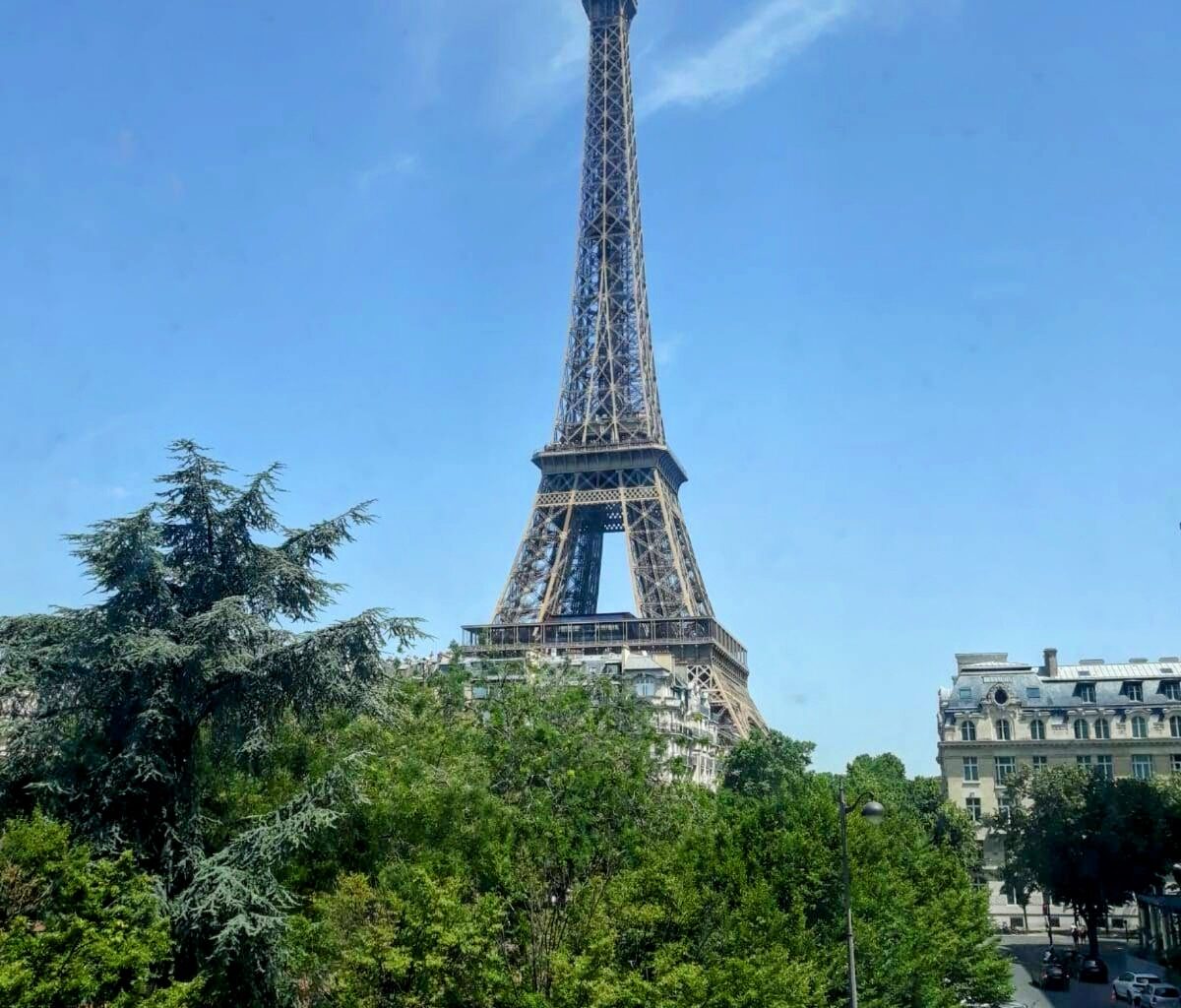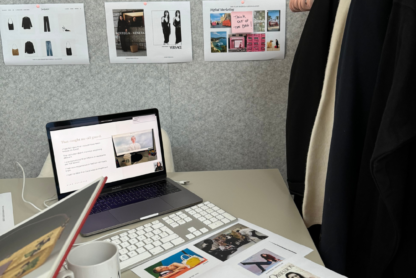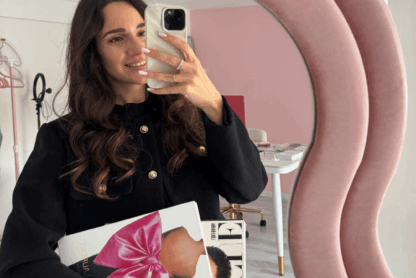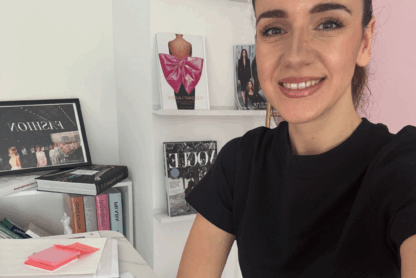Learning languages is an essential skill in today’s interconnected world. The fashion industry has evolved into a global industry, and it’s no secret that learning languages can open you up to more opportunities in fashion. It is useful not only for your personal development and connections but also for your career.
Perhaps you are one of my students or readers who dreams of relocating to Paris to work in the heart of the couture industry. Or maybe working at a remote production site in Italy sounds like the ideal plan. Or you are an aspiring buyer or marketing professional who wants to be part of an international team at a big luxury group. There are many reasons and benefits for learning languages, whether you are looking for a job or internship in your country or abroad.
If you speak several languages, consider yourself lucky because fashion is an international industry. Nowadays, companies require candidates to speak at least two foreign languages, and a third is considered a plus—especially in the European market. Indeed, many roles require being in touch with people from different countries and regions, as many fashion and luxury brands have a global footprint and are increasingly expanding to other markets, from brand activations in China to store openings in the U.S.
In a rapidly changing world and fashion industry, where the demand for certain skills fluctuates depending on the specific role and the socio-economic, cultural, and political landscape, one thing is sure: Multilingual fashion professionals are in high demand—always have been and will be.
Key Languages in the Fashion Industry
Most fashion brands that have a global presence today were founded in Italy, France, the U.S., and the U.K. Iconic names like Chanel, Prada, Ralph Lauren, and Burberry have their headquarters in those countries’ fashion capitals. In addition, they have offices around the world. This is why English, Italian, and French are the most popular languages to speak if you want to work in fashion.
English
English is the primary international language of business, including in fashion. Many fashion brands use it for internal communication, as global luxury groups and brands have big international teams with dozens of nationalities—often 40+! English often serves as the main working language there.
In addition, brands use English in their communication with foreign partners and the branches abroad. For example, when I was working at the Alexander McQueen branch in Milan, I was in touch daily with the London team.
In addition, English is most often the preferred language for marketing activities, advertising campaigns, and social media content.
But despite English being the primary language, it’s not always enough. Unless it’s not your native language, you can be missing out on more fashion job opportunities. So it’s recommended to learn more if you can.
French
Paris is home to iconic luxury brands, including Chanel, Saint Laurent, Dior, Hermès, and counting. Learning French is a must if you want to work in the French fashion capital. It is also beneficial if you work in their offices abroad.
Usually, fashion jobs and internships in Paris require full proficiency in French. In rare cases, the knowledge of English is enough.
Italian
Italy is a powerhouse in design and craftsmanship, home to iconic names like Gucci, Prada, and Valentino. The specificity of Italy is that you can find not only opportunities in big cities like Milan and Rome but also production sites where many brands are implanted. If you seek jobs in design, product development, or manufacturing, speaking Italian can enhance communication with local artisans and manufacturers. But also, if you aim for corporate roles, Italian is generally a must-have skill.
Spanish
Spain also has a strong fashion presence—from the iconic Loewe to the high-street Inditex group. Spanish is also a must for working with local designers and emerging brands in Latin America.
German
German is another nice-to-have language, especially if you are interested in e-retail giants like Zalando (based in Berlin) and Mytheresa (Munich), both of which are German companies, but also luxury brands like Hugo Boss (Metzingen) and sportswear giants like Adidas and Puma (Herzogenaurach).
Mandarin Chinese
More and more Luxury brands are tapping into the Chinese market. From opening flagships and pop-up stores to hosting fashion shows, the Chinese consumer has become increasingly important for the industry. This means there are not only more job openings in China but also opportunities to communicate with teams there.
China is also one of the major manufacturing hubs, and knowledge of Mandarin helps in sourcing materials, negotiating production deals, and marketing to Chinese consumers.
Arabic
The fashion and luxury industry is growing in the Middle East, especially in cities like Dubai and Riyadh. They are global fashion hubs with fashion weeks, flagship stores, and luxury malls.
Depending on your (dream) location and role, other languages can be useful as well. The more you speak, the better. Every language can be used to its advantage.
Which fashion roles need languages the most?
Languages are an asset in every role, but of course, some roles use them the most.
- Creative Directors: Not always an American creative director works at an American brand and an Italian in Italy, and so on. So often, they move abroad and work with local designers and craftsmen.
- Fashion Designers: Responsible for overseeing the entire collection development process, they collaborate with foreign manufacturers, suppliers, textile specialists, and pattern makers.
- Fashion Buyers and Retail Merchandisers: You’ve probably heard that fashion buying and merchandising are “traveling” roles, as they are often required to travel abroad to meet with local designers, attend trade shows, visit showrooms, etc.
- Sales Assistants and Customer Support: They receive international customers in luxury boutiques and provide customer support in multiple languages. Moreover, customer relationship managers who work online also leverage languages to personalize the communication and enhance the shopping experience.
- Fashion Marketers and Brand Managers: Understanding local languages and cultures helps brands connect with consumers on a personal level, improving engagement and brand loyalty.
- Fashion PRs and Event Managers: They communicate with media outlets worldwide and assist with organizing runway shows in London, Paris, Milan, New York, and other Fashion Week cities.
Those are the roles in fashion that tend to attach the most importance to speaking other languages and thus request them in job and internship openings. However, those are just a few examples. Like I said, even if you don’t aspire to one of those roles or it’s not explicitly required in the job description, foreign languages are an asset and can set you apart wherever you go.
Benefits of Learning Languages in Fashion
1. Career Advancement
Language skills can be a differentiating factor when pursuing career opportunities in the global fashion industry. Professionals who speak multiple languages are often more competitive candidates for roles in multinational fashion houses and fashion agencies. Therefore, this proficiency can lead to a broader range of job opportunities, bigger responsibilities, and promotions.
2. Access to New Markets
Learning languages offers the chance to work in different regions around the world. I am not only referring to finding a job abroad but also your responsibilities as a buyer, designer, or brand manager that often include an international component, as we just saw.
3. Building Relationships and Networks
Learning languages is a highly valuable soft skill that can erase not only the linguistic barriers (to complete technical tasks like managing contracts, for example) but also facilitate cultural proximity. Speaking the same language as the client or partner often enhances communication and trust, facilitating smoother negotiations, sealing deals, and unlocking new partnerships and projects. Languages thus serve as a key component in networking and building strong, lasting relationships in the fashion industry.
4. Understanding Cultural Nuances
Each country has its own unique consumer base shaped by cultural values, climate, and lifestyle preferences. Speaking the local language allows fashion professionals to gain deeper insights into these market-specific consumer behaviors and preferences. A language also carries with it the underlying cultural contexts that can guide fashion buyers and marketers in selecting and promoting products and styles that resonate deeply with the local target audience.
A good example is fashion marketing. Language skills allow marketing teams to create tailored content, such as social media posts, advertisements, and PR campaigns, that speak directly to the nuances of each market.
5. Building a Global Mindset
Lastly, learning languages fosters a global mindset, an increasingly important trait in the fashion industry, where collaboration and international diversification are paramount. Proficiency in different languages doesn’t only enhance communication; it also develops related soft skills, such as open-mindedness and adaptability. These qualities are crucial in understanding and meeting the diverse needs of a global clientele.
Some Tips
- Learn languages and fashion at the same time: You can learn and practice your English, French, or Italian by reading fashion magazines, discovering documentaries, or listening to podcasts. Mix the useful with pleasure (although to me, learning a new language is already a pleasure in itself, but combining it with fashion is even better ;))
- Take industry-related courses: If you have an intermediate level, you can even take industry courses so you can learn about a specific topic and fashion terminology in the target language;
- Practice with native fashion professionals: Attend international fashion events and join online fashion talks with Vogue, The Business of Fashion, and of course us, Glam Observer in our webinar, courses, and private community;)
Languages are one of the most useful soft skills every fashion professional needs. Don’t overlook the key role they play in career advancement and your professional tasks.
What language do you want to learn?
If you want to learn about many other strategies necessary to land a job in fashion, join my free webinar via this link.








